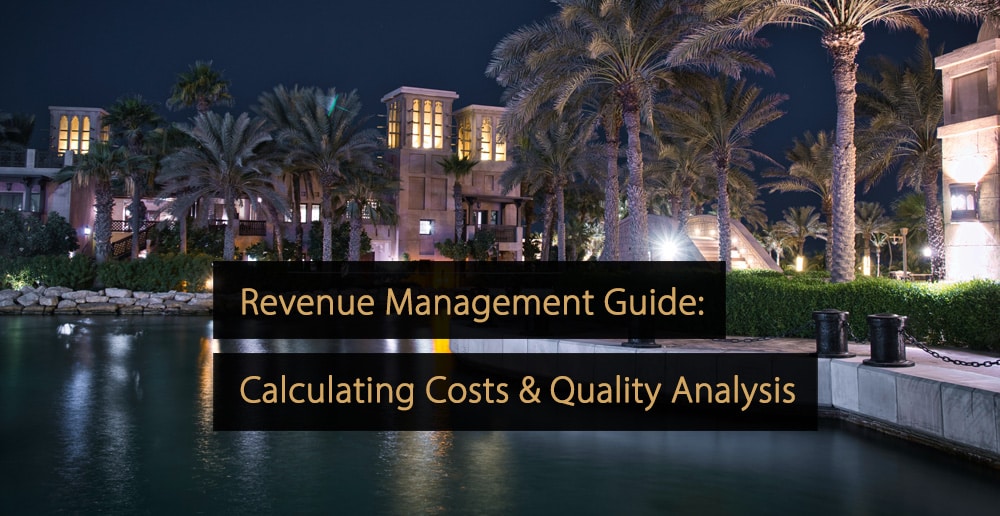You’ll probably agree that seizing revenue opportunities is more important now than ever – especially with costs increasing in every area of hotel operations and demand only recovering. Otherwise, your property’s profitability could take a severe hit, and its long-term business success may be at risk.
Luckily, there are many things you can do to capitalize on demand and get your hotel through these times successfully.
6 Ways Your Hotel Might be Missing Revenue Opportunities
Go through the following six points to see how you may leave money on the table and how you can quickly turn things around.
1. Setting Rates Manually
While manual rate setting used to be the only option, you should think twice about sticking with it today. Yes, it gives you maximum control of your rates. But it also costs lots of valuable time. Particularly if you have multiple room types and want to price dynamically, the time spent on market research and manual system updates quickly gets out of hand.
If you can’t make room for this task daily, maybe you only update your prices once a week, month or season. While that saves time, it is impossible to ensure that rates always reflect the latest market situation. As a result, you risk losing bookings during low season and selling too cheap during peak demand.
2. Lagging Behind Market Shifts
You may have already decided to use an RMS to help price your rooms and free you up for other tasks. That’s a good start. An RMS’ optimized rate suggestions can help you capitalize on more revenue opportunities that come your way.
But does your RMS update rates automatically in real-time? If not, you’re still not taking every chance to maximize your revenue. Why? Because today’s demand can shift so fast, you’re still missing opportunities if you don’t make rate changes in lockstep with the market. On the other hand, if you keep up with market developments, you can see fantastic results. One property in Sweden boosted its RGI by 47.3% once it started leveraging automatic real-time rate updates.
3. Not Considering Market Demand Data
Which data do you look at when setting your rates? Is it your pick-up? Or maybe your on-the-books business? Or perhaps your compset’s prices? You’re on the right track if it’s all three because they’re essential for building a well-rounded revenue management strategy. But don’t stop there.
Have you also considered taking flight search volume, search pressure, and source market behavior into consideration? While these data points can be hard to collect, they’re extremely valuable when shaping pricing decisions because they give you a bigger picture of the market and developing demand.
Unfortunately, this type of data is impossible to gather and use in real-time due to its volume and complexity. It would be best if you had a business intelligence tool to collect and present the information in a concise and easy-to-read format.
Ideally, you’ll have an RMS which automatically incorporates these forward-looking data points into its price recommendations and updates. That makes an even more refined pricing strategy possible.
4. Looking at Competitors Too Much or Not Enough
Compset analysis is an integral part of market analysis and pricing. But it’s crucial to find the right balance between looking at your market and competitor data. Following your rival’s price changes blindly is never a good idea, no matter if they’re adjusting up or down. They might have exceptional circumstances that don’t apply to you, e.g., they just won or lost a big group.
But don’t ignore their rate shifts, either. That can lead to you outpricing yourself or filling up at cheap rates when you don’t have to. In short, keep an eye on your compset and try to understand their changes but make your own pricing decisions.
5. Overlooking Demand Patterns
You probably have a good grip on the primary demand patterns that make up high and low seasons in your market. However, there are more nuances to booking patterns. Analyzing and incorporating them in your rate strategy can help you price more effectively.
Here are some examples:
- Demand by weekday, e.g., mid-week vs. weekend
- Demand for certain room types by season or weekday, e.g., weekend leisure travelers prefers double rooms. In contrast, mid-week business travelers want single rooms, and families traveling during the summer holidays need larger or connecting rooms.
- Demand by type of guest, e.g., couples without kids traveling during pre- or post-season while families book during high season.
6. Sticking With a Rigid Price Hierarchy
A rigid pricing structure is best when pricing manually since it’s easy and quick to follow. But you can seize more revenue opportunities when you’re flexible here. For example, if you use variable room type supplements depending on demand, you can guide bookings towards higher room categories on peak days. You avoid giving free upgrades because the base category is already booked out.
Adjusting all these nuances manually is complex and time-intensive, though. Again an RMS with support for multiple price hierarchies comes in handy, allowing you to configure alternative price hierarchies. You can use this function if you want to have different rulesets during more extended periods (e.g., for seasons) or repeatedly on certain days of the week. It should also allow you to make temporary daily changes by setting minimum and maximum prices for each room type so the system can be more flexible with rate changes, all while staying within your preset ranges.
Free Guide: The Ultimate Combination of Tools for Successful Revenue Management
As a revenue manager, you know the two primary constraints in your field: data and time. Data is essential since it enables you to comprehend what is happening in your industry.
In this guide, you’ll learn how technology can improve your decision-making and increase your bottom line by enabling you to obtain higher-quality data quickly.
Click here to download the guide “Increase Your Revenue Management Performance with Hotel Tech”.
Which of these seven points deserves a second glance at your hotel? Check your current revenue management approach to see where you’re still missing opportunities. Chances are, the solution is relatively straightforward, and a few simple changes will quickly show impressive results.
More Tips to Grow Your Business
Revfine.com is the leading knowledge platform for the hospitality and travel industry. Professionals use our insights, strategies, and actionable tips to get inspired, optimize revenue, innovate processes, and improve customer experience.Explore expert advice on management, marketing, revenue management, operations, software, and technology in our dedicated Hotel, Hospitality, and Travel & Tourism categories.








Leave A Comment